The key highlight of the Hanoi photography trip with SGTrekker was to shed our city armour, get soil on our shoes and feel the rain on our faces as we trekked through scenic farm hills and primitive villages.
A sense of vulnerability hung around me as I walked along the edge of winding paths downhill, the soles of my shoes forgetting the traction of asphalt, and coming face-to-face with beasts (other than cats and dogs) on the way. The unpaved roads can be slippery when it rains (which is almost like always) and for me who never grew up with buffalos, seeing them at close range both awed yet rattled me. Despite their brute built, they are such gentle giants but the fear of being gored or trampled upon was a real fear of mine.
I was like a fish out of water. I liked it. I found the experience immensely refreshing. Here's my account of Lao Cai Village, the first of 2 villages we had in our photographic itinerary.
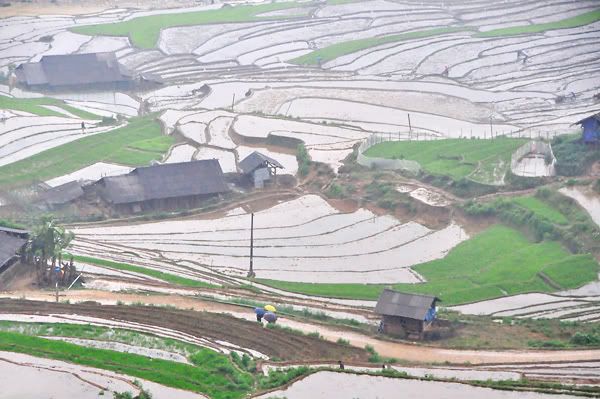 |
| It was raining and foggy during our trek so landscape photos tended to be in soft focus. |
Looking down at the valley fields atop the hill, it's amazing how man managed to tattoo such grand designs onto the skin of Mother Earth. The stepped padi plains formed a geologic resemblance of 3-dimensional fish scales.
This step formation of cultivating crops such as wheat is found mostly in Southeast Asia. The ingenious invention increased the farmable surface area of a valley and took advantage of the natural flow of water (from mountaintop to the valley below) to trap and irrigate the crops. The agricultural 'innovation' was necessary because Asia grew mostly wheat-based crops and they luuurvve jacuzzis.
The moment we alighted from our van, we were surrounded by local villagers to buy stuff. Man, they're pesky! With the stamina of houseflies. They can follow you all the way from the beginning to the end of the trail repeatedly saying, "You buy this from me?", "You take my picture, you buy something from me."
And if you bought something from one of them, another will come to you and say, "You buy from her you never buy from me?" In the collage above, one of our mates got the human touch tactic... a small kid held on to his hand and walked the whole way while the parent made small talk with him and when it's time, the
Along the way, I also saw this humongous, perfectly shaped piece of buffalo turd. It was serious bullsh*t on steroids!
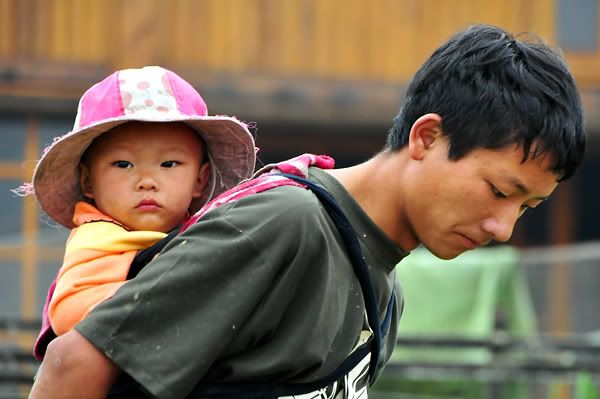 |
| And the result of tattooing each others' neck instead of gaia? See how young this father is? He could be my grandson! LOL |
Houses at Lao Cai Village are very simple sheds made of wood with thatched roofs. No frills, no decorations, purely built for functional purposes. This is different from the farming communities I saw in Bali where they built elaborately decorated spirit houses and rather ornate homes even if they are farmers living by stepped rice terraces.
Many factors contribute to life expectancy such as childhood immunizations, availability and quality of healthcare, as well as living conditions. While the fresh air and laborious way of life in the countryside trumps the urban fumes and couch potato state we live in, accessibility to medical facilities prolongs life. I didn't see any clinic or hospital in the village during the trek. Or perhaps they are only known to the villagers.
A lot of the the kids I came across here had 2 trails of greenish-yellow slime creeping out of their nostrils, which are signs of bacteria and/or viral infection. And they don't bother cleaning themselves up even if you point a camera at them. Yucky! If you intend to do close-ups portraits of them, don't do it with a full stomach.
Our trek took us to a gallery of sorts on the mid-hill where we can study the ethnic emblems on their fabrics. I think the people in Lao Cai belonged to the H'mong tribe, the biggest tribe in Sapa Valley, and since the Lao Cai region borders China, their artistic influences were undoubtedly Chinese. The people don't speak Mandarin though but I guess they understood the auspicious message on the 铜钱 (old Chinese coin).
Life, is very simple here. The adults either work the fields or try to engage tourists in trade while the children derived pleasures from frolicking in the sand and mud. Or try to engage tourists in trade.
I believe time came to a standstill for the lot of us city folks. But of course, the bliss is shortlived for the moment a photo opportunity or subject presents itself, we jumped into action, surrounding the village dweller be it a man, women, child or livestock with our intimidating lens and start firing a torrent of clicks.
The baby was well-fed, what about the grown-ups? I'm not sure if what we were being served for lunch present themselves in the menu of the villagers too but one thing's for sure, the flavour is as unsaturated as the natural environment we dined in.
Nothing really wow and rather blank in taste, but I enjoyed the uncomplicated dishes. The simple flavour washed my tongue of the sodium-laden hawker food in my daily diet. A kind of food 'plain water' to cleanse the palate.
In Singapore, parents complain about the weight of their children's school bags while the kids whine about homework. They all are legitimate concerns. But when I saw how the young kids carry a younger sibling on their backs the whole day while they trail tourists or when their parents worked, I can't help but feel that if they can take hardships, so can we. In many ways, we have it a lot better.
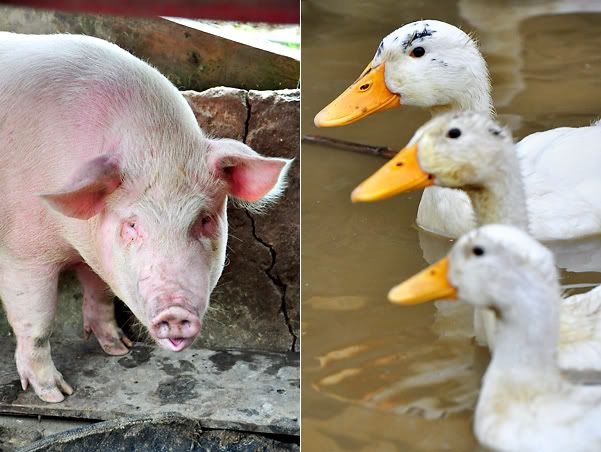 |
I was trying to get it to look into my camera with a smattering of English and pig grunts. Then someone spoke in Hokkien and it immediately looked over! So I called to it in the dialect and it actually started to come closer! Confirm Ah Beng pig! Ha.
Amidst all the wet pockets, misty mountain ranges, and farm animals, the pressence of a masonry workshop broke up the visual orchestra. I was surprised to come across this hut-shop by the roadside with amazing stone works!
Because Lao Cai village is low on man-made decor, I am taken aback by the fine craftmanship and artistic interpretation of rocks. There were many half-carved statues of the H'mong people still merged with the stone block they come from... as if to signify their rock solid will to survive poverty.
But what was even more 'out of place' was the school in Lao Cai village. It's a good kind of unusual. Compared to the wooden sheds and huts we've seen so far, the concrete and modern-looking school stuck out like a sore thumb everybody would want to have. The development of a school here is probably due to the humanitarian efforts of Oxfam, an international non-profit organisation to solve poverty and injustice.
The photos were taken on a Friday at 2:00 pm and no students were in sight. Either it was off-school hours or that education isn't valued by the farmer parents. Child labour is very valuable to reduce poverty so parents would rather have their children work in the fields or be souvenir peddlers.
Moreover, looking at the unsanitary living conditions, infant mortality rate should be high even if the H'mongs may have evolved the biological adaptations to their environment, so the contribution of each child to the family's income takes preference over learning.
This is my parting shot for this post. It has been a unforgetable learning journey to see how the farmers of Lao Cai live and meeting the residents. Apart from the sights, smells and (lack of) sounds, the one thing that was most memorable for me was the persistence of the child souvenir sellers.
Despite the load they carry, they will pester any incoming tourist to buy something from them. A few even followed us all the way, which was an almost 5 hours trek (we started at 11 am and ended around 4 pm)! Along the way, they will keep asking, "You buy this from me?", becoming almost like a chant. And when a few of them speak at different times, they created a melody that reminded me of the call of mating frogs in the rain.
Instead of traumatising you with a recording of the children's persistent imploration for trade, let me leave you with a cheery rendition of the evergreen Chinese folk favourite 乡间小路 (The Small Village Road) by 蔡琴. Have fun exploring the countryside! :o)

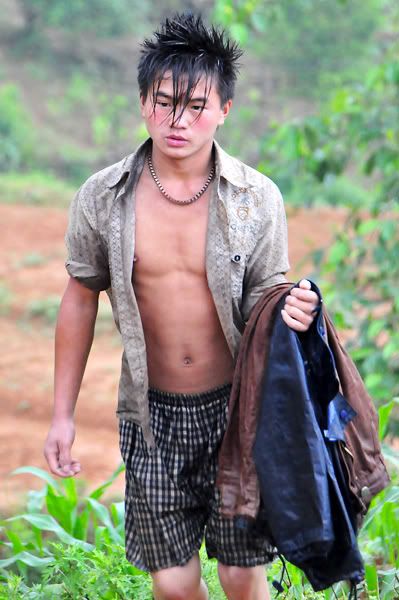
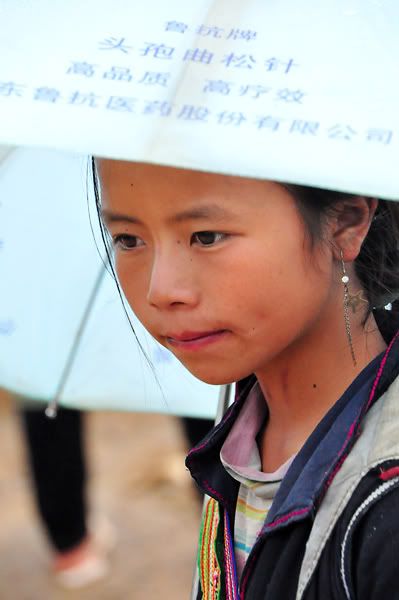
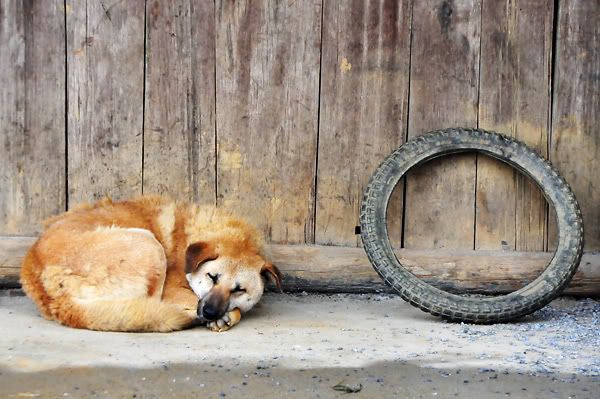
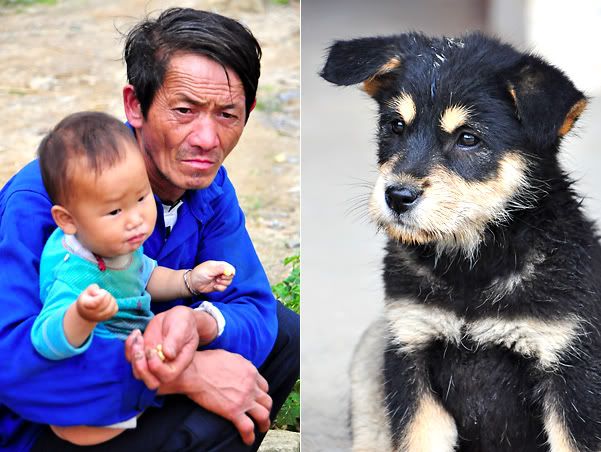
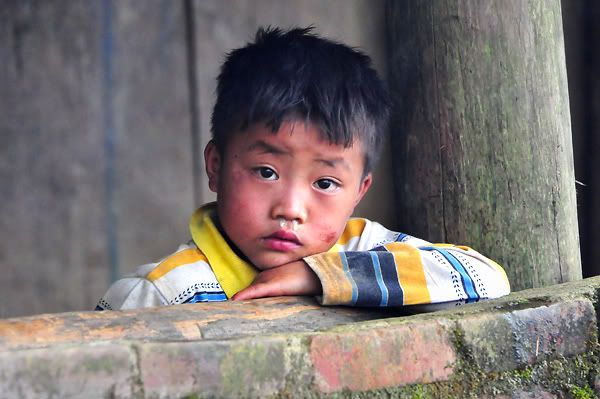
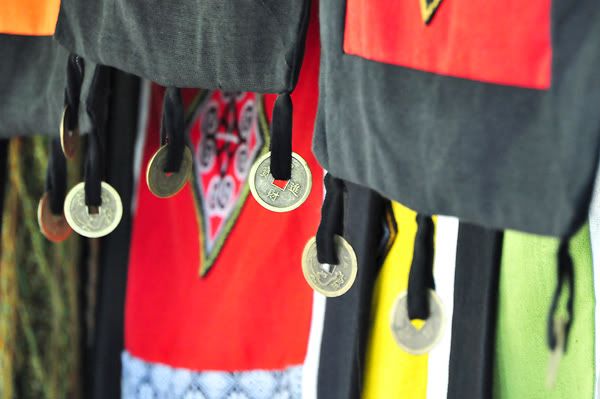
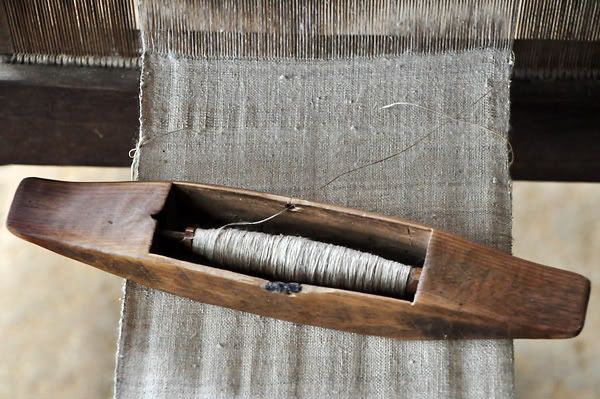
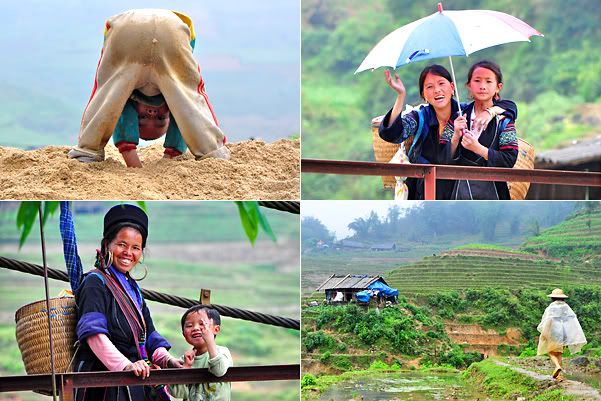
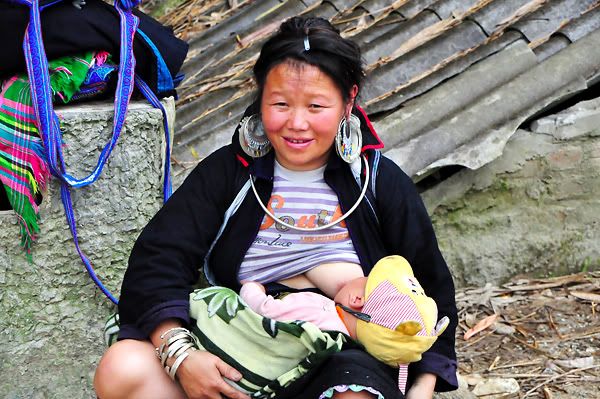

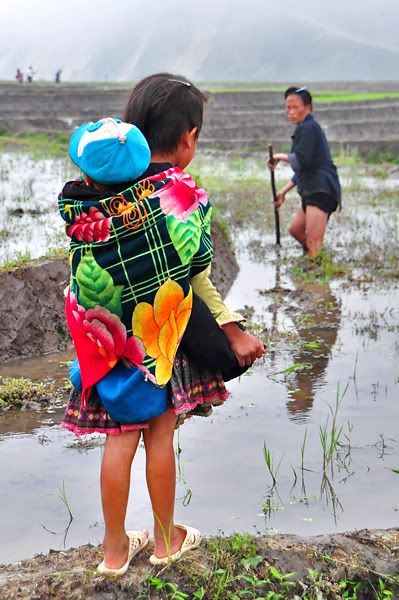
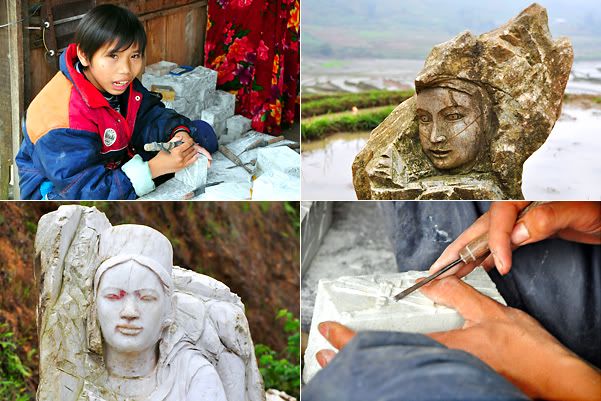
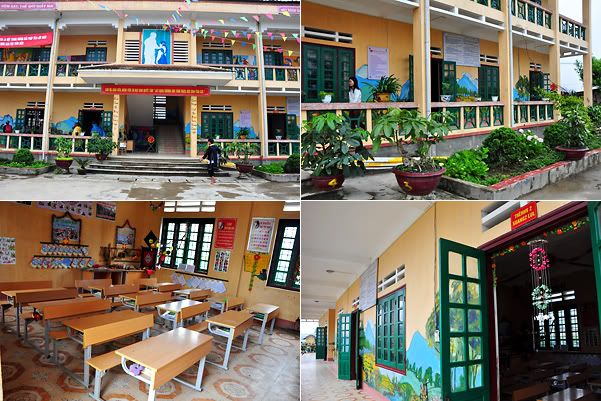
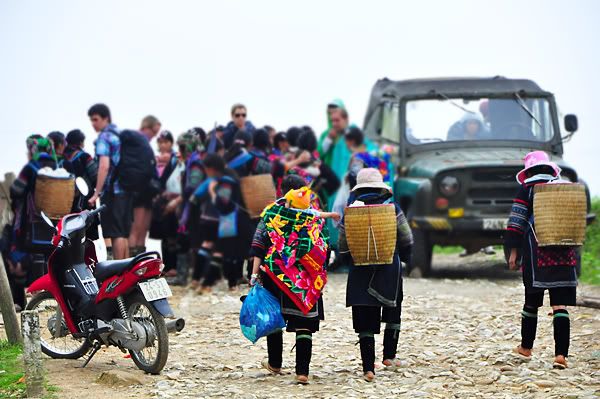
Hahaha, I haven't been to Vietnam (yet) but from my experience true-blue villager boys are very good-looking hunky-dory one! ;P It was like that when I was in the Thai-Burmese jungle.
ReplyDeleteheh heh... sounds like u'll enjoy a village lifestyle :o) darren
ReplyDeleteAhaha let's just say that when I lived in that village in the jungle for 2 weeks every time there were some chores that the boys needed to do (build dam ah, chop bamboo ah), I would somehow be sitting outside. ;P
ReplyDelete